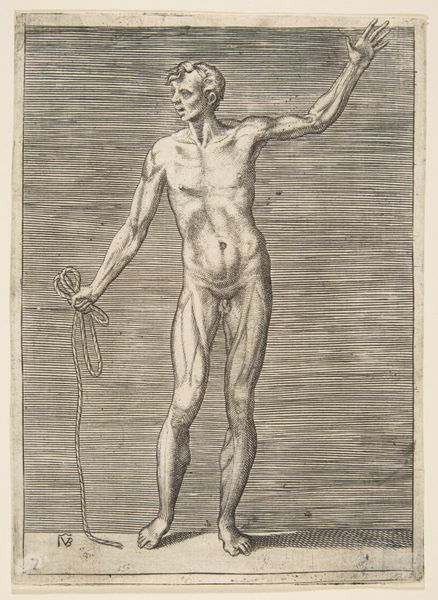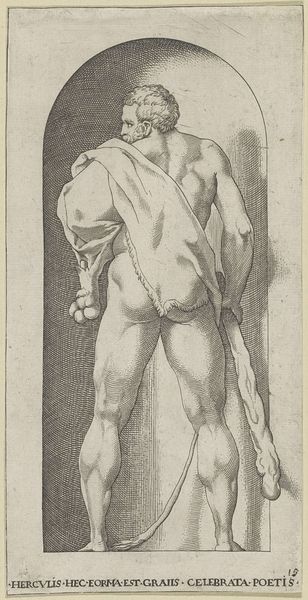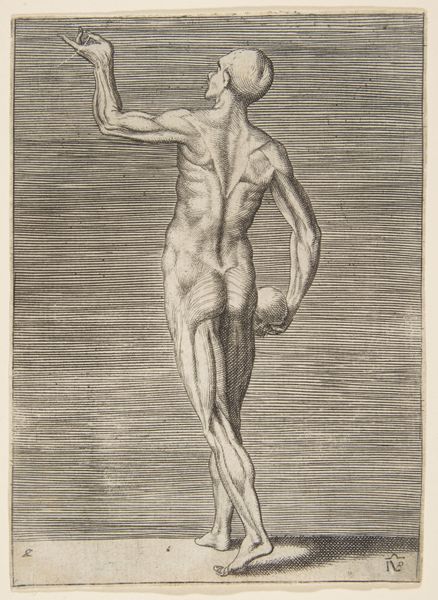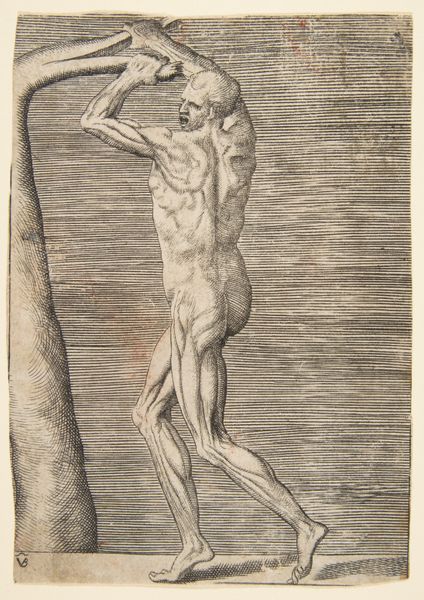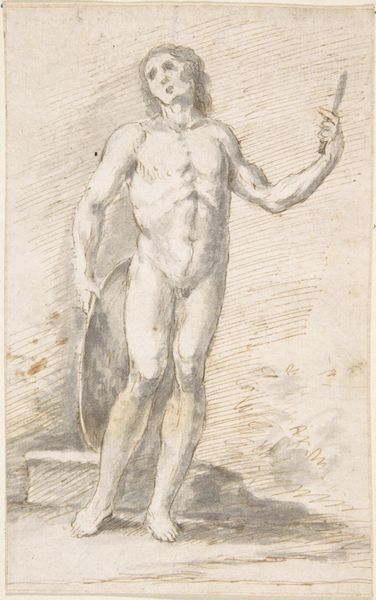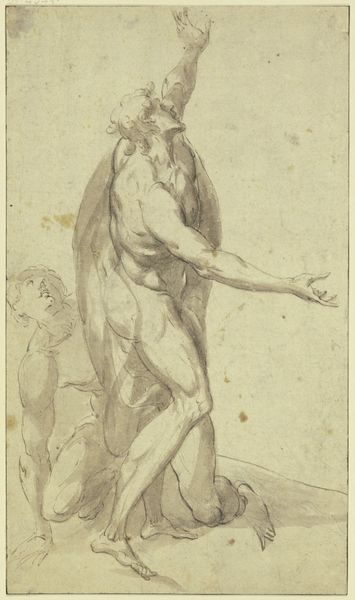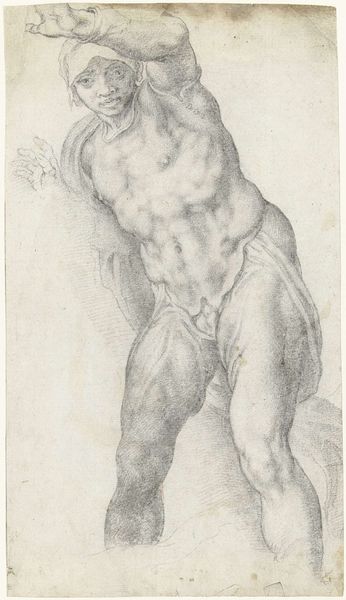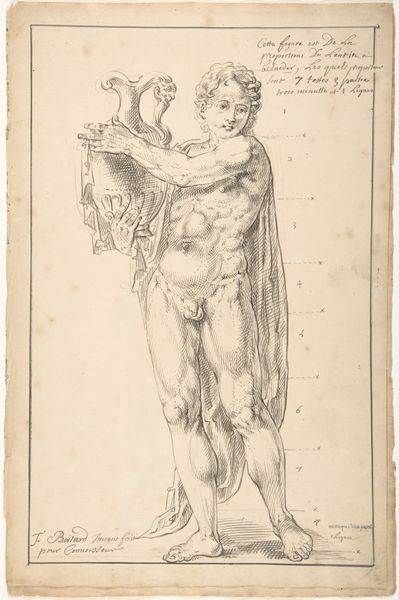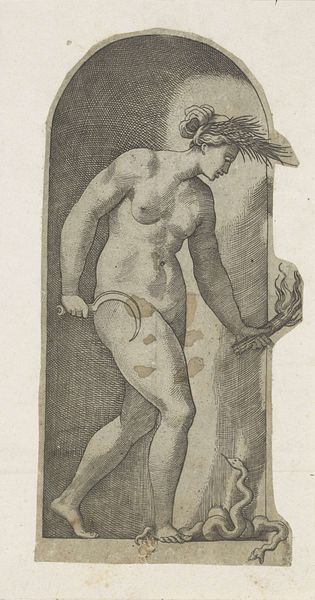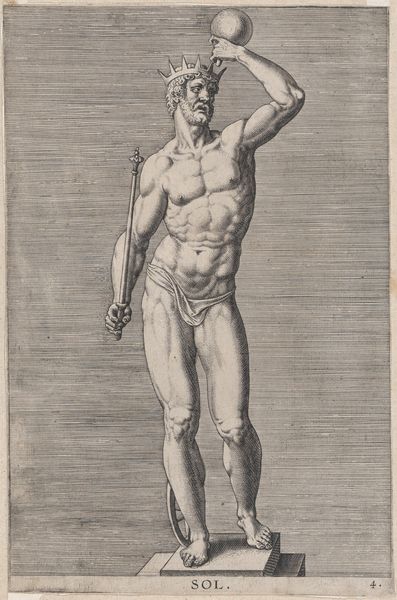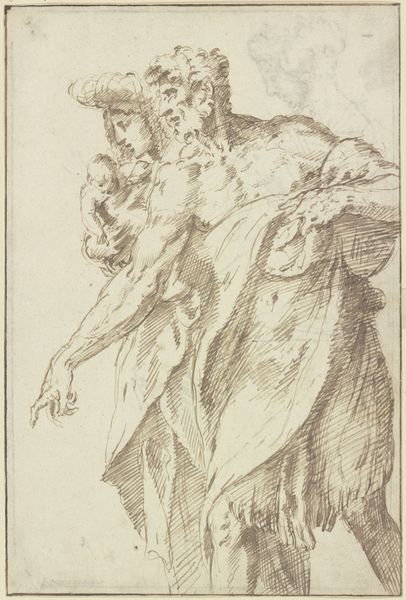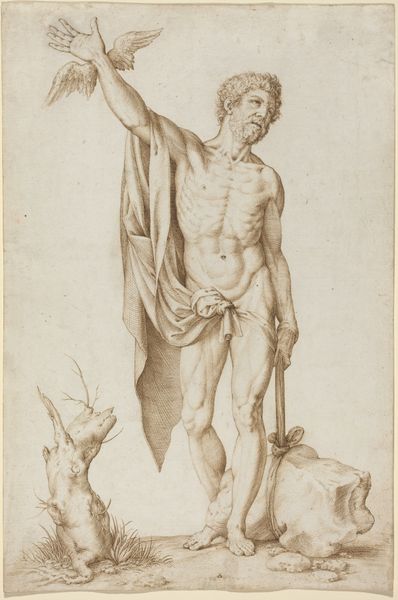
Flayed man with left hand on hip, holding skin in right hand 1526 - 1536
0:00
0:00
drawing, print, engraving
#
drawing
# print
#
figuration
#
11_renaissance
#
history-painting
#
academic-art
#
italian-renaissance
#
nude
#
engraving
Dimensions: sheet: 6 x 4 7/16 in. (15.3 x 11.2 cm)
Copyright: Public Domain
Giulio Bonasone crafted this engraving of a flayed man in the 16th century. The figure, stripped of his skin, stands as a stark symbol, echoing the anatomical studies that flourished during the Renaissance. Here, the motif of the flayed human form transcends mere anatomical curiosity. We see echoes of Saint Bartholomew, often depicted flayed alive, his skin a testament to faith and martyrdom. The act of flaying takes on layers of meaning—exposing not just muscle and sinew, but also the vulnerability of the human condition. This resonates with ancient sacrificial rites, where skinning was a symbolic act of renewal, found across cultures from the myth of Marsyas to Mesoamerican rituals. The image's raw emotional power is undeniable. Its influence resurfaces in modern and contemporary art, bearing witness to a collective fascination with the body’s fragility and strength. The visual symbol persists through time, echoing our primal fears and artistic expressions across centuries.
Comments
No comments
Be the first to comment and join the conversation on the ultimate creative platform.
